If he could figure out a way to get down the hill on those double-cambered 215s, the fleet-footed mobility of Nordic gear would help in the quest for freshies. So along with a like-minded band of free-heelers, Borkovec tweaked the technique and tested the limits of his toothpick-thin boards while snagging classic lines around his adopted hometown of Crested Butte.
“I think our main purpose was really to make the backcountry more accessible,” Borkovec says. “We wanted to be able to do everything on one pair of skis.” Borkovec says he discovered the multi-purpose Nordic downhill technique while mending an injury in 1971.
“I broke my leg downhill racing for Western State, Borkovec says. “It was New Year’s Day 1971. That spring, I started doing some cross-country skiing to rehab. A friend of mine said, ‘There’s a way to turn those things. It’s called a telemark turn, and I think it looks like this.’ ”
At the same time, Borkovec says he remembered seeing some old photos of Stein Eriksen’s father using the technique. Intrigued, he started experimenting with different body positions and weight shifts to make the turn work. “I got to a point where the turns started to work. It was amazing, even on those skinny old wooden skis, I was able to link turns and get down the hill,” Borkovec says.
The key, he says, was to distribute the weight evenly between both skis, to face the upper body downhill and to keep the upper body upright – still key elements of centered telemark skiing. “All of a sudden, it felt so good, so natural,” Borkovec said. It felt like you could fly down the hill in just about any snow conditions.” Borkovec thought to himself, “This is a real, functional ski technique, not just something out of the history books.”
Since then, of course, three-pinners have come full circle, back into the mainstream of the sport. With recent innovations in design and material, and an attitude refreshed by the new school Alpine and snowboard breeze, today’s top tele aces make the technique a relevant tool for all-terrain winter travel. Borkovec is quick to point out that he was only one part of a region-by-region movement re-discovering the technique during that era.
The ‘lost’ turn?
But how was it lost in the first place and why did it need to rediscovered? To understand the role of Borkovec and his cohorts in that process, you’ve got to go back — way back, more than 100 years. Much of the story is familiar. Most credit Sondre Norheim with invention of the telemark turn, named for the mountainous Norwegian province where the farmer and ski jumper lived. In fact, some would argue that he invented modern skiing, period.Norheim, scrambling around the mountains using the long, straight and heavy boards of that era, felt that he needed more control and maneuverability, according to Lou Dawson’s Wild Snow. Norheim began to experiment and build shorter skis, incorporating a sidecut. Then he added a primitive heelpiece, consisting of a twisted willow strap wrapped around both the front and back of the boot. The additional leverage enabled him to experiment with different styles of turns. In addition to the dropped-knee telemark, he also refined the technique of turning both skis simultaneously while staying in a more upright position — the precursor of the modern parallel turn. Norheim also used the stable telemark position to land Nordic-style jumps. With a low center of gravity and plenty of fore and aft stability, the tele worked as well on the steep run-outs of the ski-flying hills as it did in variable backcountry conditions.
But as skiing evolved into a recreational pursuit during the first half of the 20th Century, it was shaped to a large degree by a handful of authoritarian Austro-Germanic ski instructors in the Alps who favored the new Arlberg style of turning, precursor of the modern parallel. Historical accounts from E. John B. Allen’s From Skisport to Skiing indicate that Hannes Schneider’s famed Arlberg instructors actively worked to eliminate the telemark turn, chasing after students and hitting them in the legs with a ski pole if they dared lift a leg during a stem turn. “Anyone caught doing a telemark was considered a criminal,” reported Appalachian Mountain Club member Wilhelmine Wright after a ski vacation in Austria.
The new equipment made it easier for skiers to simultaneously steer skis across the fall line, without the subtle weight shifts and delicate fore and aft movements that allowed free-heelers to finesse their way through variable snow and over rough terrain, leading ski thrust into the spray like the prow of a Viking war ship. Soon, the turn was relegated to the jumping hill and Scandinavian touring venues.
God’s own church
Enter the Crested Butte tele posse, including Borkovec, who even began using his skinny skis to patrol the far-flung nooks of the Butte’s lift-served terrain. Born in 1949, the youngest of four brothers in the southwestern Chicago suburb of Riverside, Borkovec says his love of skiing goes back to his earliest memories. “My dad was a ski fanatic. He wished he’d been born in the mountains,” he says. Borkovec headed west for college on the cusp of the sometimes magical, and sometimes turbulent, revolutionary late-60s.He raced in alpine events and entered ski jumping competitions for Western State College in Gunnison Colorado under coach Sven Wick, then headed for Crested Butte and a job on the ski patrol. And even as he refined his tele technique, Borkovec says another important part of his life was coming into focus.
“I had avoided the draft because of the leg injury. I started looking into the spiritual aspects of my life, reading the bible and going to church,” he says. “It was a search for somethng more meaningful. By that time I was 23 and it seemed like there had to be more to life than sex, drugs and rock-n-roll.”
Borkovec says spending time daily in the outdoor cathedral of the Elk Mountains was a part of his spiritual journey, with clear signs of a grand design in ample evidence. “To be in the church that God created for himself is inspiring. I could see the hand of the Designer. I was certainly inspired. I was convinced there is a designer.”
Borkovec says the story of his role in the modern American tele revival wouldn’t be complete without mention of these inner experiences. “I feel like part of my calling, just like spreading tele in the ‘70s and ‘80s, is spreading Christian gospel. I think that’s so important in today’s world, with all the craziness. It’s important for people to understand that part of my passion is to educate people within the church,” he says.
Evolution
Outside the church, Borkovec penned a series of instructional articles on tele skiing for some of the national ski mags and worked with ski makers to tweak the design of the rapidly evolving gear. In 1977, he started a Nordic ski school and guide service, enabling him to integrate the Nordic elements with the evolving spirit of Rocky Mountain backcountry glisse.That was a year after what he describes as the beginning of a “dream” Crested Butte marriage to a long-time sweetheart. “I fell in love with a girl going to Western State … It was a dream. We bought a house, waited three years to have a kid and did tons of backpacking, horseback riding,” Borkovec says.
Borkovec says that, sadly, a divorce 11 years later was the unforeseen ending to some great times. But he is thankful to his ex-wife, especially for two sons – Jesse, 22, and Jordan, 16. Borkovec says both spend the summers with him in the Aspen area. This year (2001) marked the first season of bow hunting for the younger of the two, an experience he treasures. “It was pretty special for the three of us to be out there together,” he says, relishing the memory of the crisp autumn days on hillsides flecked with aspen gold.
And somewhere along the way, Borkovec says he lost the everyday passion for working on his skis. In 1985, he took a personnel job with Crested Butte ski area. “I decided I just wanted to ski for fun rather than work,” he says.
Borkovec now works with the human resources department of an Aspen property management company, answering questions for this telephone interview from an office that looks out on Smuggler Mountain and Red Mountain in a stunning slice of Colorado high country. “I still get out and ski a few peaks,” he says. “I’ve still got my old tele gear–leather boots and three-pin bindings.” He says he doesn’t reject the new gear out of any indignant sense of retro righteousness, but simply hasn’t set acquisition of new toys as a high priority. But he looks forward to making turns on some of the latest all-mountain mid-fats, and says he may modernize this season, after teaching a tele clinic at the Aspen touring center, his first ski teaching gig in a while. “I enjoy being on the mountain and involved as a volunteer,” he says, describing stints as chief of course for competitive events at the ski area.
But the backcountry still beckons, and Borkovec says he is fortunate to still live near some of the best backcountry in the Rockies, with classic touring routes across high passes and challenging alpine routes on the toothsome Elks, but won’t give away his favorite stashes except in very general terms. “The terrain between here and Crested Butte is like heaven. I love it,” he says. “From here to Eagle is mellower — but through the Elks just about anywhere is amazing.”This article is reprinted from Couloir XIV-3, December 2001
© 2001

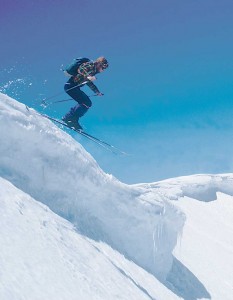
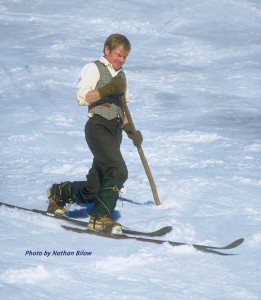
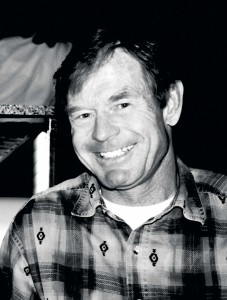
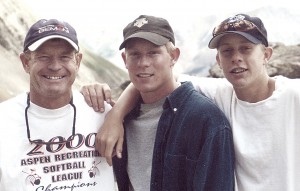
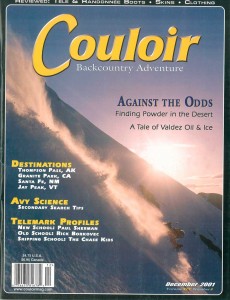
Recent Comments